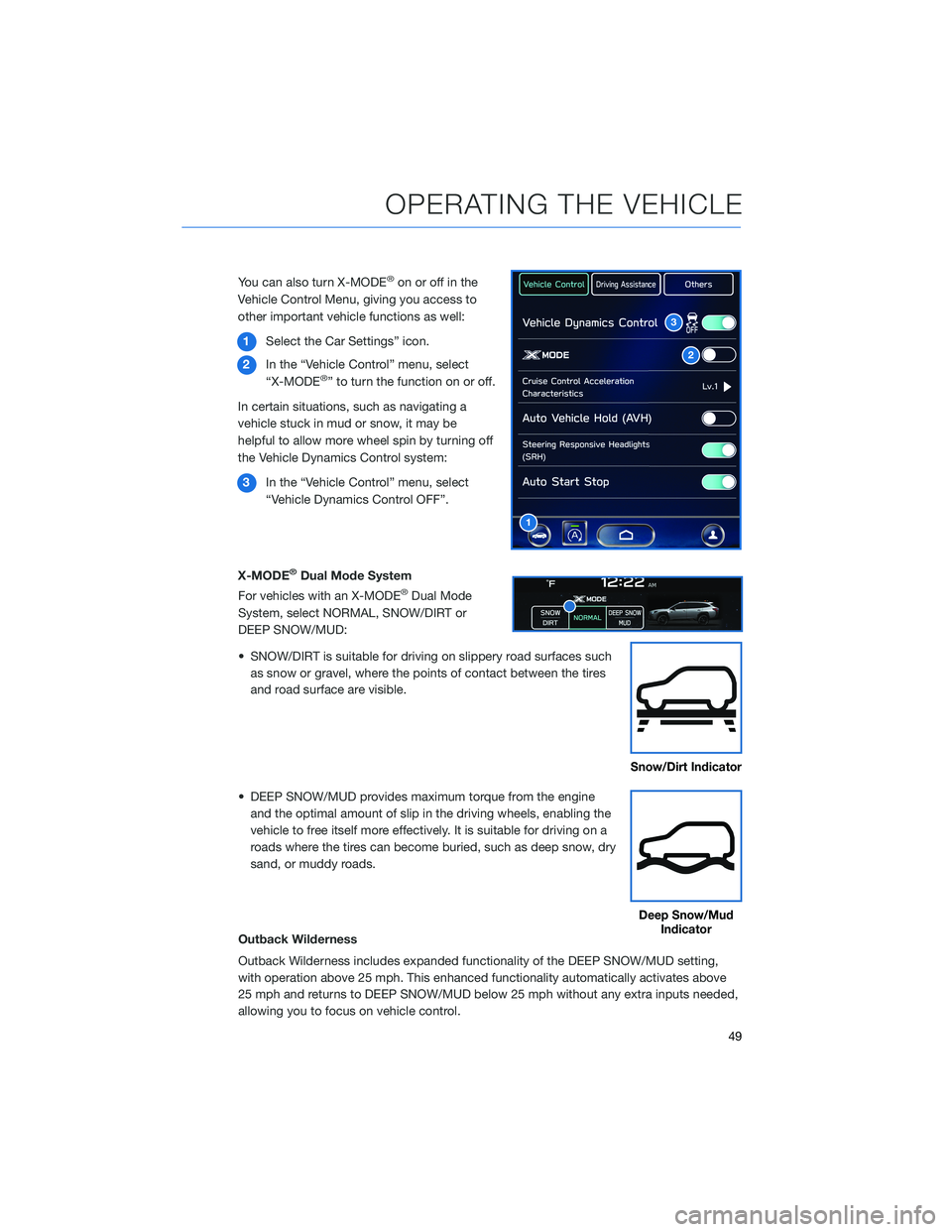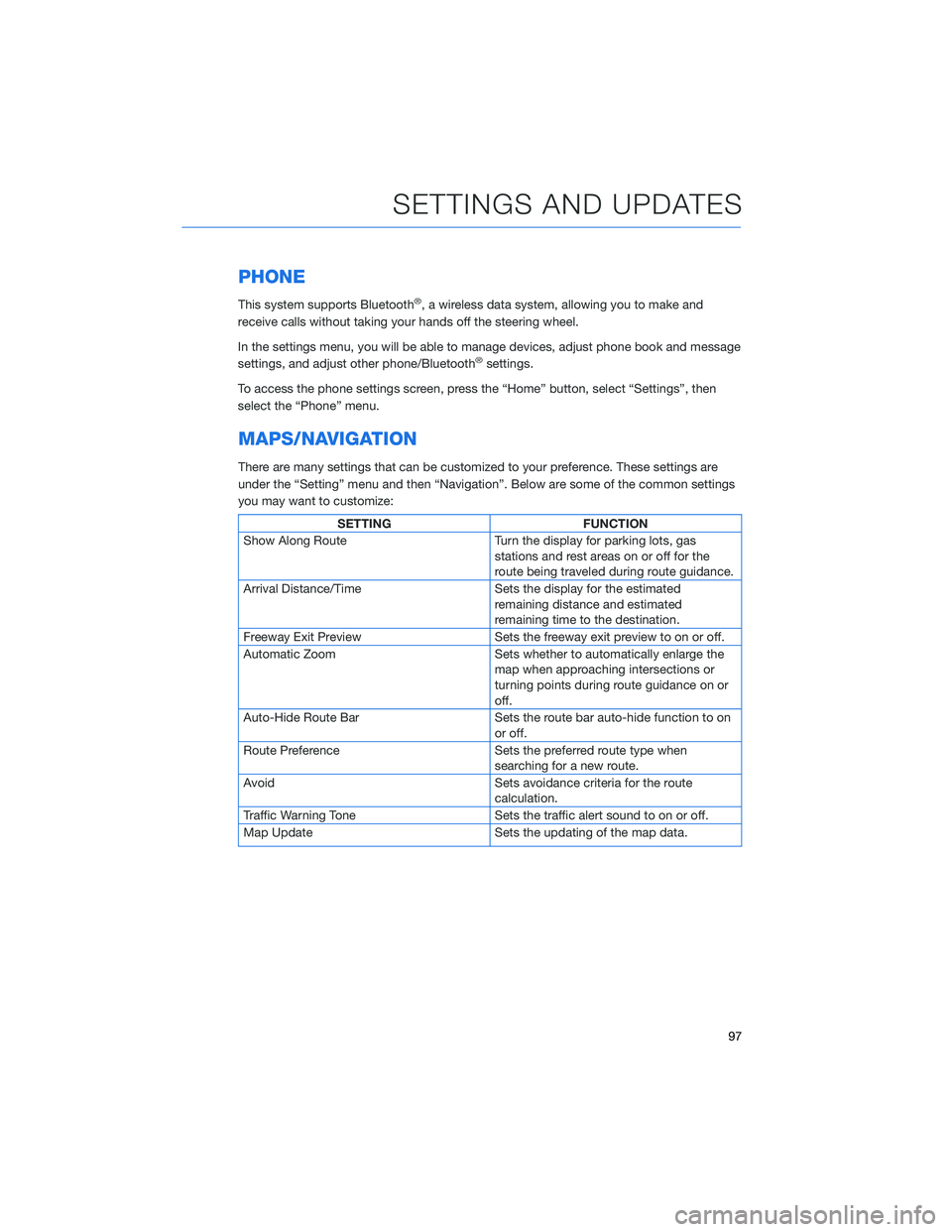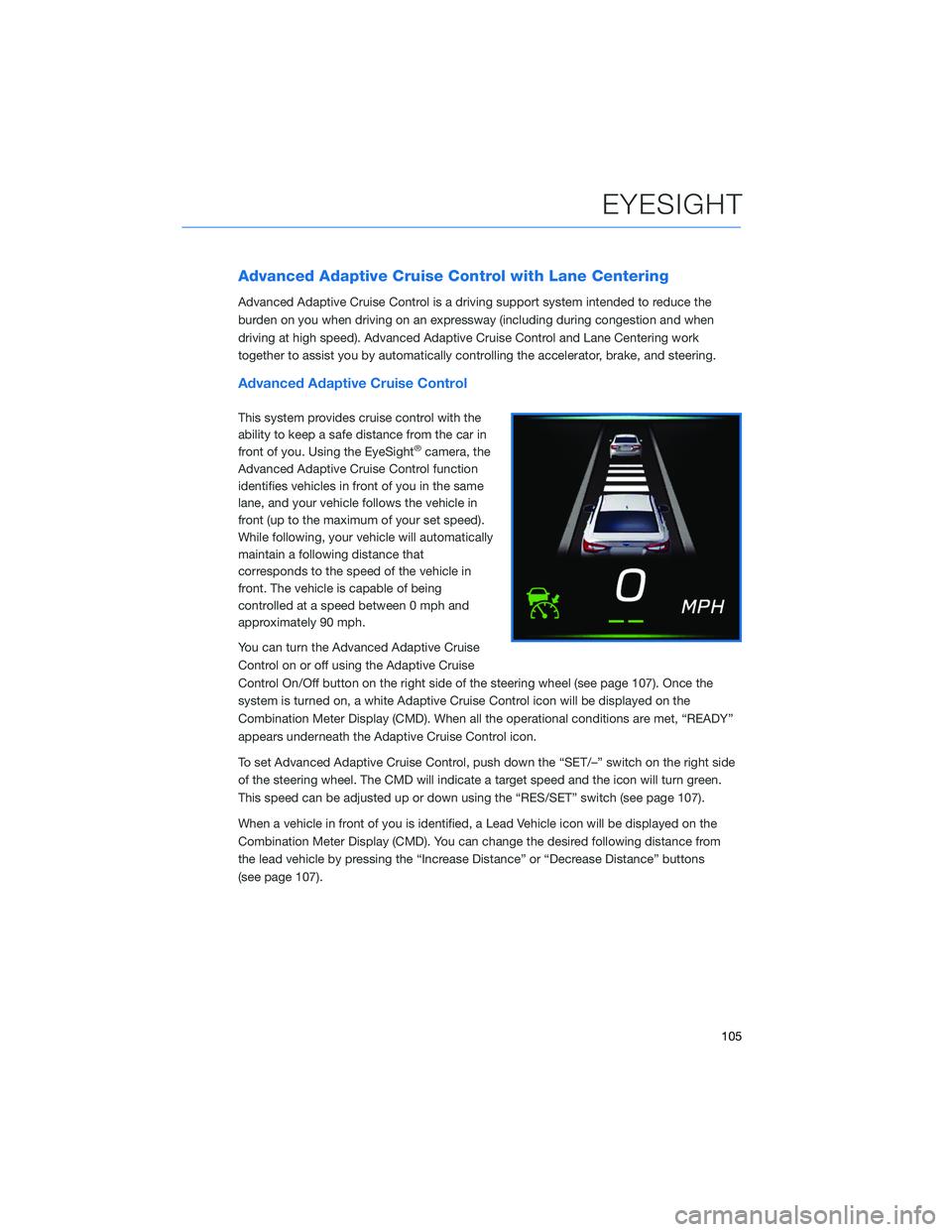Page 51 of 172

You can also turn X-MODE®on or off in the
Vehicle Control Menu, giving you access to
other important vehicle functions as well:
1Select the Car Settings” icon.
2In the “Vehicle Control” menu, select
“X-MODE
®” to turn the function on or off.
In certain situations, such as navigating a
vehicle stuck in mud or snow, it may be
helpful to allow more wheel spin by turning off
the Vehicle Dynamics Control system:
3In the “Vehicle Control” menu, select
“Vehicle Dynamics Control OFF”.
X-MODE
®Dual Mode System
For vehicles with an X-MODE®Dual Mode
System, select NORMAL, SNOW/DIRT or
DEEP SNOW/MUD:
• SNOW/DIRT is suitable for driving on slippery road surfaces such
as snow or gravel, where the points of contact between the tires
and road surface are visible.
• DEEP SNOW/MUD provides maximum torque from the engine
and the optimal amount of slip in the driving wheels, enabling the
vehicle to free itself more effectively. It is suitable for driving on a
roads where the tires can become buried, such as deep snow, dry
sand, or muddy roads.
Outback Wilderness
Outback Wilderness includes expanded functionality of the DEEP SNOW/MUD setting,
with operation above 25 mph. This enhanced functionality automatically activates above
25 mph and returns to DEEP SNOW/MUD below 25 mph without any extra inputs needed,
allowing you to focus on vehicle control.
2
3
1
Snow/Dirt Indicator
Deep Snow/Mud
Indicator
OPERATING THE VEHICLE
49
Page 59 of 172
Store the cover under the floor of the cargo
area when not in use. Instructions for operation
are included on the cargo cover housing.
SPARE TIRE
The maintenance tools and spare tire are
stored in the under-floor storage compartment.
Hang the hook provided on the underside of
the lid on the rear edge of the roof to keep the
lid open. Outback Onyx and Wilderness come
equipped with a full size spare tire.
Your vehicle is equipped with the following
maintenance tools.
• Jack
• Jack handle
• Screwdriver
• Towing hook (eye bolt)
• Wheel nut wrench
• Torque wrench for roof rails (if equipped)
NOTE: The temporary spare tire, if equipped,
must be used only on a rear wheel. If a front
wheel tire gets punctured, replace the wheel
with a rear wheel and install the temporary
spare tire in place of the removed rear wheel.
For more information, please refer to “In Case of Emergency” in your Owner’s Manual.
Cargo Cover Stowed
PASSENGER/CARGO AREAS
57
Page 66 of 172
Tire pressure specification is listed on the tire pressure inflation label located on the
driver’s side door pillar and in the table below. For complete tire pressure specifications
and information, please refer to the tire specifications in your Owner’s Manual.
Tire Inflation Pressure
Front
WheelRear WheelTemporary
Spare Tire
35 psi 33 psi 60 psi
NOTE: The temporary spare tire, if
equipped, must be used only on a rear
wheel. If a front wheel tire gets punctured,
replace the wheel with a rear wheel and
install the temporary spare tire in place of
the removed rear wheel. Outback Onyx and
Wilderness are equipped with a full size
spare tire.
The default tire pressure measurement units can be changed from
kPa to PSi by using the Touchscreen. You can learn more about
changing the reading from the how-to video linked in the QR code
and the following steps.
Tire Inflation Pressure Label
ADDITIONAL SPECIFICATIONS
64
Page 72 of 172
STEERING WHEEL CONTROLS
1Presets/Skip:Press to toggle through
your presets or change a track or media
file. Press and hold to fast-forward or
rewind.
2Volume:Press the volume switch up or
down to increase or decrease the
volume.
3Source:Press the source button to
change the audio sources between radio
modes and media modes.
4Voice Recognition:Press to initiate the
built-in voice recognition system. If you
have an Android or Apple device paired,
press and hold to start the Apple
CarPlay
®/Android Auto™ voice recognition function.
5Call/End:Press to receive or end a call without taking your hands off of the steering
wheel.
Starlink Audio Controls
STARLINK OVERVIEW
70
Page 87 of 172
MAKING A CALL
With a paired phone, you can make a call
through voice recognition by touching the
“Voice Recognition Switch” on the steering
wheel to start the voice recognition system.
After pressing the “Voice Recognition Switch”,
wait for the “Voice Guidance” screen to appear
on the Touchscreen and say “Call [name and
phone type]” or “Dial [number]”.
To make a call from the Touchscreen, start by
pushing the “Home” button and then select
“Phone”. After the phone screen displays,
select the method you would like to use to
make a call.
• Recents – Allows you to call someone that
has recently called you or that you called.
• Favorites – Allows you to place a call to one
of your favorites on your phone.
• Phonebook – Will display the phonebook
that is on your phone.
• Messages – Allows you to call someone that
recently sent you a text message.
• Keypad – Allow you to dial any number you
would like.
PHONE
85
Page 88 of 172
RECEIVING A CALL
To receive a call, press the “Call” switch on the steering wheel or the “Accept” button on
the Touchscreen.
To reject a call, press the “End” switch on the steering wheel or the “Decline” button on the
Touchscreen.
PHONE
86
Page 99 of 172

PHONE
This system supports Bluetooth®, a wireless data system, allowing you to make and
receive calls without taking your hands off the steering wheel.
In the settings menu, you will be able to manage devices, adjust phone book and message
settings, and adjust other phone/Bluetooth
®settings.
To access the phone settings screen, press the “Home” button, select “Settings”, then
select the “Phone” menu.
MAPS/NAVIGATION
There are many settings that can be customized to your preference. These settings are
under the “Setting” menu and then “Navigation”. Below are some of the common settings
you may want to customize:
SETTING FUNCTION
Show Along Route Turn the display for parking lots, gas
stations and rest areas on or off for the
route being traveled during route guidance.
Arrival Distance/Time Sets the display for the estimated
remaining distance and estimated
remaining time to the destination.
Freeway Exit Preview Sets the freeway exit preview to on or off.
Automatic Zoom Sets whether to automatically enlarge the
map when approaching intersections or
turning points during route guidance on or
off.
Auto-Hide Route Bar Sets the route bar auto-hide function to on
or off.
Route Preference Sets the preferred route type when
searching for a new route.
Avoid Sets avoidance criteria for the route
calculation.
Traffic Warning Tone Sets the traffic alert sound to on or off.
Map Update Sets the updating of the map data.
SETTINGS AND UPDATES
97
Page 107 of 172

Advanced Adaptive Cruise Control with Lane Centering
Advanced Adaptive Cruise Control is a driving support system intended to reduce the
burden on you when driving on an expressway (including during congestion and when
driving at high speed). Advanced Adaptive Cruise Control and Lane Centering work
together to assist you by automatically controlling the accelerator, brake, and steering.
Advanced Adaptive Cruise Control
This system provides cruise control with the
ability to keep a safe distance from the car in
front of you. Using the EyeSight
®camera, the
Advanced Adaptive Cruise Control function
identifies vehicles in front of you in the same
lane, and your vehicle follows the vehicle in
front (up to the maximum of your set speed).
While following, your vehicle will automatically
maintain a following distance that
corresponds to the speed of the vehicle in
front. The vehicle is capable of being
controlled at a speed between 0 mph and
approximately 90 mph.
You can turn the Advanced Adaptive Cruise
Control on or off using the Adaptive Cruise
Control On/Off button on the right side of the steering wheel (see page 107). Once the
system is turned on, a white Adaptive Cruise Control icon will be displayed on the
Combination Meter Display (CMD). When all the operational conditions are met, “READY”
appears underneath the Adaptive Cruise Control icon.
To set Advanced Adaptive Cruise Control, push down the “SET/–” switch on the right side
of the steering wheel. The CMD will indicate a target speed and the icon will turn green.
This speed can be adjusted up or down using the “RES/SET” switch (see page 107).
When a vehicle in front of you is identified, a Lead Vehicle icon will be displayed on the
Combination Meter Display (CMD). You can change the desired following distance from
the lead vehicle by pressing the “Increase Distance” or “Decrease Distance” buttons
(see page 107).
EYESIGHT
105